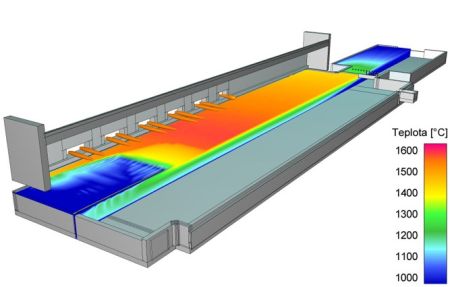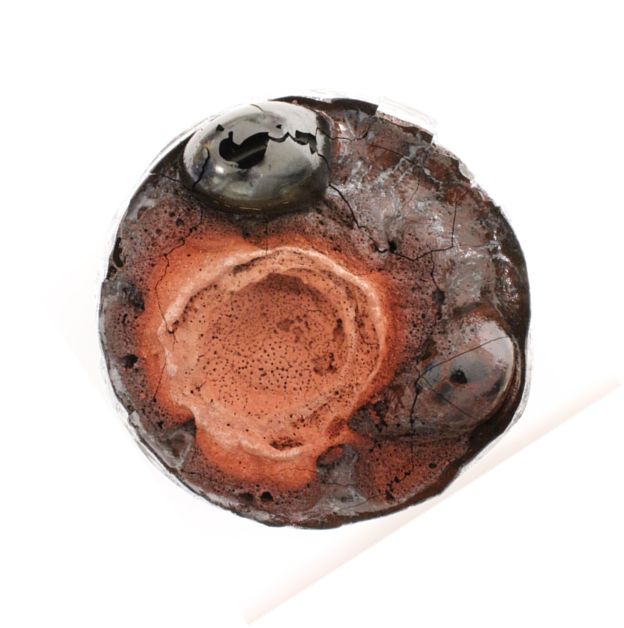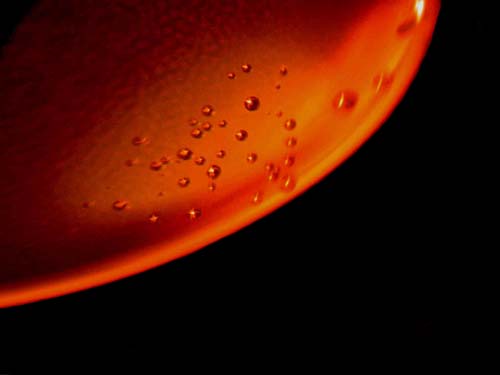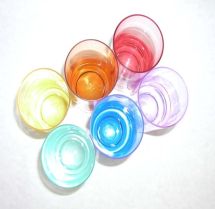stdClass Object
(
[nazev] => Laboratory of Inorganic Materials
[adresa_url] =>
[api_hash] =>
[seo_desc] =>
[jazyk] =>
[jednojazycny] =>
[barva] => cervena
[indexace] => 1
[obrazek] =>
[ga_force] =>
[cookie_force] =>
[secureredirect] =>
[google_verification] =>
[ga_account] =>
[ga_domain] =>
[ga4_account] => G-VKDBFLKL51
[gtm_id] =>
[gt_code] =>
[kontrola_pred] =>
[omezeni] => 0
[pozadi1] => 6_0868.jpg
[pozadi2] =>
[pozadi3] =>
[pozadi4] =>
[pozadi5] =>
[robots] =>
[htmlheaders] =>
[newurl_domain] => 'lam.vscht.cz'
[newurl_jazyk] => 'en'
[newurl_akce] => '[en]'
[newurl_iduzel] =>
[newurl_path] => 8548/20508/20510
[newurl_path_link] => Odkaz na newurlCMS
[iduzel] => 20510
[platne_od] => 31.10.2023 17:03:00
[zmeneno_cas] => 31.10.2023 17:03:56.393301
[zmeneno_uzivatel_jmeno] => Jan Kříž
[canonical_url] =>
[idvazba] => 25426
[cms_time] => 1714454063
[skupina_www] => Array
(
)
[slovnik] => stdClass Object
(
[logo_href] => /
[logo] =>  [logo_mobile_href] => /
[logo_mobile] =>
[logo_mobile_href] => /
[logo_mobile] =>  [google_search] => 001523547858480163194:u-cbn29rzve
[social_fb_odkaz] =>
[social_tw_odkaz] =>
[social_yt_odkaz] =>
[intranet_odkaz] => http://intranet.vscht.cz/
[intranet_text] => Intranet
[mobile_over_nadpis_menu] => Menu
[mobile_over_nadpis_search] => Search
[mobile_over_nadpis_jazyky] => Languages
[mobile_over_nadpis_login] => Login
[menu_home] => Homepage
[drobecky] => You are here: VŠCHT Praha – FCHT – Laboratory of Inorganic Materials
[aktualizovano] => Updated
[autor] => Author
[paticka_budova_a_nadpis] => BUILDING A
[paticka_budova_a_popis] => Rector,
Department of Communications,
Department of Education,
FCT Dean’s Office,
Centre for Information Services
[paticka_budova_b_nadpis] => BUILDING B
[paticka_budova_b_popis] => Department of R&D, Dean’s Offices:
FET,
FFBT,
FCE,
Computer Centre,
Department of International Relations,
Bursar
[paticka_budova_c_nadpis] => BUILDING C
[paticka_budova_c_popis] => Crèche Zkumavka,
General Practitioner,
Department of Economics and Management,
Department of Mathematics
[paticka_budova_1_nadpis] => NATIONAL LIBRARY OF TECHNOLOGY
[paticka_budova_1_popis] =>
[paticka_budova_2_nadpis] => CAFÉ CARBON
[paticka_budova_2_popis] =>
[paticka_adresa] => Laboratory of Inorganic Materials
Joint Workplace of The UCT Prague and The Institute of Rock Structure and Mechanics, v.v.i.
[google_search] => 001523547858480163194:u-cbn29rzve
[social_fb_odkaz] =>
[social_tw_odkaz] =>
[social_yt_odkaz] =>
[intranet_odkaz] => http://intranet.vscht.cz/
[intranet_text] => Intranet
[mobile_over_nadpis_menu] => Menu
[mobile_over_nadpis_search] => Search
[mobile_over_nadpis_jazyky] => Languages
[mobile_over_nadpis_login] => Login
[menu_home] => Homepage
[drobecky] => You are here: VŠCHT Praha – FCHT – Laboratory of Inorganic Materials
[aktualizovano] => Updated
[autor] => Author
[paticka_budova_a_nadpis] => BUILDING A
[paticka_budova_a_popis] => Rector,
Department of Communications,
Department of Education,
FCT Dean’s Office,
Centre for Information Services
[paticka_budova_b_nadpis] => BUILDING B
[paticka_budova_b_popis] => Department of R&D, Dean’s Offices:
FET,
FFBT,
FCE,
Computer Centre,
Department of International Relations,
Bursar
[paticka_budova_c_nadpis] => BUILDING C
[paticka_budova_c_popis] => Crèche Zkumavka,
General Practitioner,
Department of Economics and Management,
Department of Mathematics
[paticka_budova_1_nadpis] => NATIONAL LIBRARY OF TECHNOLOGY
[paticka_budova_1_popis] =>
[paticka_budova_2_nadpis] => CAFÉ CARBON
[paticka_budova_2_popis] =>
[paticka_adresa] => Laboratory of Inorganic Materials
Joint Workplace of The UCT Prague and The Institute of Rock Structure and Mechanics, v.v.i.
Technická 5
166 28 Prague 6 – Dejvice
IČO: 60461373 / VAT: CZ60461373
Czech Post certified digital mail code: sp4j9ch
Copyright: UCT Prague 2015
Technical support by the Computing Centre.
[paticka_odkaz_mail] => mailto:Vladislava.Tonarova@vscht.cz
[zobraz_desktop_verzi] => switch to desktop version
[social_fb_title] =>
[social_tw_title] =>
[social_yt_title] =>
[zobraz_mobilni_verzi] => switch to mobile version
[paticka_mapa_odkaz] =>
[nepodporovany_prohlizec] => For full access, please use different browser.
[preloader] => Wait a second...
[social_in_odkaz] =>
[social_li_odkaz] =>
)
[poduzel] => stdClass Object
(
[20558] => stdClass Object
(
[obsah] =>
[poduzel] => stdClass Object
(
[20560] => stdClass Object
(
[obsah] =>
[iduzel] => 20560
[canonical_url] => //lam.vscht.cz
[skupina_www] => Array
(
)
[url] =>
[sablona] => stdClass Object
(
[class] =>
[html] =>
[css] =>
[js] =>
[autonomni] =>
)
)
[20561] => stdClass Object
(
[obsah] =>
[iduzel] => 20561
[canonical_url] => //lam.vscht.cz
[skupina_www] => Array
(
)
[url] =>
[sablona] => stdClass Object
(
[class] =>
[html] =>
[css] =>
[js] =>
[autonomni] =>
)
)
[20562] => stdClass Object
(
[obsah] =>
[iduzel] => 20562
[canonical_url] => //lam.vscht.cz
[skupina_www] => Array
(
)
[url] =>
[sablona] => stdClass Object
(
[class] =>
[html] =>
[css] =>
[js] =>
[autonomni] =>
)
)
)
[iduzel] => 20558
[canonical_url] =>
[skupina_www] => Array
(
)
[url] =>
[sablona] => stdClass Object
(
[class] =>
[html] =>
[css] =>
[js] =>
[autonomni] =>
)
)
[20559] => stdClass Object
(
[obsah] =>
[poduzel] => stdClass Object
(
[20563] => stdClass Object
(
[nazev] =>
[seo_title] => Laboratory of Inorganic Materials
[seo_desc] =>
[autor] =>
[autor_email] =>
[obsah] =>
|
Laboratory of Inorganic Materials is joint working place of the University of Chemistry and Technology Prague and the Institute of rock structure and mechanics ASCR, v.v.i. Laboratory activity evenly covers the area of education and both basic and applied research.
|
Melting space for the vitrification of radioactive materials |
|
|
For students
|
| Bubble in glass containig Na2SO4 condensate |
|
Laboratory members are involved in the education within bachelor and master study programs Chemistry and Materials. Doctoral students of the study program Chemistry and Technology of Inorganic Materials work closely with us when assisting solved research projects, completing required coursework and writing and defending a dissertation about their research project. |
|
 |
|
| The result of the mathematical model of the flow in the melting chamber - sectional view showing the formation of spiral flow, which allows to increase the efficiency of the melting process. |
Image analysis - measurement of the size of a bubble in the melt. |
Laboratory of Inorganic Materials was created from the original Laboratory for chemistry and technology of silicates and ICT Prague and ASCR founded in 1961. In 2012, the Laboratory was transformed into a Joint workplace of the University of Chemistry and Technology Prague UCT Prague) and the Institute of Rock Structure and Mechanics ASCR, v.v.i. The Laboratory cooperates with materials-oriented UCT Prague departments, especially the Department of glass and ceramics. In addition to the labs in UCT Prague (Building A, Room A04), we also work at the Institute of Rock Structure and Mechanics ASCR v.v.i., V Holešovičkách 41, 180 00 Prague 8.

Temperature distribution on the top melt level in a glass melting space
Postgraduate study programme: Chemistry and Technology of Materials
Field of study: Chemistry and technology of inorganic materials
Themes of the postgraduate studies
Supervisor: Prof. Ing. Lubomír Němec, DrSc.
|
Supervisor: Doc. Ing. Jaroslav Kloužek, CSc.
|
Supervisor: Doc. Ing. Jaroslav Kloužek, CSc. |
Supervisor: Prof. Ing. Lubomír Němec, DrSc.
|
Research areas |
Glass melting processes and their modelling |
New glass melting concepts |
|||
|
|
Mathematical modeling is traditional tool for the analysis of glass melting process. CFD methods calculate velocity and temperature fiels ... |
 |
New relative value – space utilization – quantitatively assesses melting processes in continuous melting space. The current industrial furnaces... | |
Development of new types of glasses |
Materials for photonics and optoelectronics |
|||
|
|
The composition of the proposed glass is optimized in terms of the required properties. Colors affected by the redox state of the glass can be predicted ... |
|
The industrial development is coming with a requirement of new materials. In optic and optoelectronic ... |
|
Research of processes for vitrification of nuclear waste |
||||
 |
Solving the problem of immobilizing a large amount of nuclear waste coming from the production of plutonium is the actual question ... | |||
Experimental techniques
|
|
|
UCT Prague |
IRSM ASCR, v.v.i. |
|
University of Chemistry and Technology Prague Laboratory of Inorganic Materials Technická 5 166 28 Prague 6 Czech Republic
Tel. +420 22044 5192 (l. 4318, 5195) E-mail: Jaroslav.Klouzek@vscht.cz |
Institute of Rock Structure and Mechanics ASCR, v.v.i. Laboratory of Inorganic Materials V Holešovičkách 41 180 00 Prague 8 Czech Republic
Tel. +420 266009 421 (l. 423) |
|
Public transportation: |
Public transportation: Metro Line "C" to Holešovice station, exit to Kobylisy, Prosek, then by bus 102, 210 to Vychovatelna station. Metro Line "B" to Palmovka station, exit to Divadlo pod Palmovkou, then by tram 10, 24, 25 to Vychovatelna station. |
DATA
stdClass Object
(
[nazev] => Hledáme nové studenty
[seo_title] => Hledáme nové studenty
[seo_desc] =>
[autor] =>
[autor_email] =>
[perex] => Doktor Richard Pokorný, hlavní člen výzkumného týmu v Laboratoři anorganických materiálů, společného pracoviště VŠCHT Praha a Ústavu struktury a mechaniky hornin Akademie věd České republiky, v nedávné době získal několik grantů, díky kterým může vyslat studenty na zahraniční stáže. Jelikož se ale laboratoř jako taková do kontaktu se studenty příliš nedostává, v současné době hledá hned několik lidí z řad studentů, kteří by se přihlásili na závěrečné práce.
[ikona] =>
[obrazek] => 0002~~803NKcnMSwcA.jpg
[ogobrazek] =>
[pozadi] =>
[obsah] => Čeho se granty konkrétně týkají, co by měl student za práci?
Náš největší grant, na kterém pracujeme pro americké ministerstvo energetiky, se týká vitrifikace, čili imobilizace (jaderného) odpadu ve formě skla. S žádnými radioaktivními předměty se ale u nás nesetkáte, veškerý náš výzkum probíhá se „simulovanými“ odpady, se kterými zkoumáme proces tavení. Grant probíhá ve spolupráci americkými národními laboratořemi a zahrnuje i vyslání studenta (studentů) na stáž právě do národních laboratoří v USA. V loňských letech jsme pokaždé nějakého studenta vyslali, poslední doktorandka se do Spojených států vydala na půl roku, ale letos nemáme nikoho mladého a perspektivního, kdo by na léto odjel.
Další dva granty, jejichž řešení je financováno z GAČR a z MŠMT, se týká tavení komerčního skla, které používáme běžně v domácnostech – od okenních skel, přes lahve na nápoje, až po parfémy. I na jejich řešení spolupracujeme se zahraničními partnery z USA, Japonska, ale i s domácím průmyslem. Pracovní náplň studenta by byla podobná, jako v předchozím případě – zkoumat děje při tavení skla a zjišťovat, jakým způsobem tento proces optimalizovat.
Pokud by měl student zájem, kdy by se měl přihlásit? A na jak dlouho vycestuje?
Nejlepší by bylo, kdyby samozřejmě nastoupil už někdy teď, čím dřív tím líp, aby za těch pár měsíců získal nějaké zkušenosti a schopnosti, naučil se, jak se se sklem pracuje, a ačkoliv se mu někdo ze začátku v USA určitě bude věnovat, aby přijel s nějakými základy a v prostředí laboratoří s vysokoteplotními pecemi se již uměl pohybovat. Jak jsem zmínil před chvílí, poslední doktorandka strávila v USA půl roku, ale pokud bude chtít student vycestovat pouze na dobu prázdnin, určitě to možné také je. Kontaktovat naši laboratoř ale můžete kdykoliv – další z možností je k nám nastoupit na léto, a na základě toho se rozhodnout, zda v naší laboratoři pokračovat i dál.
Ta nabídka platí pouze pro doktorandy?
Vůbec ne! Samozřejmě budeme za doktorandy rádi, ale nabídka určitě platí i pro bakalářské a magisterské studenty. Práce u nás může být i finančně ohodnocená, tudíž to student rovnou může brát jako první práci v oboru, pracovité studenty můžeme vzít na konference apod.
Kde přesně jsou partnerské laboratoře?
Pacific Northwest National Laboratory (PNNL) na severozápadě spojených států, patřící k 17 národním laboratořím v USA, asi 4 hodiny autem od Seattlu, tak trochu divoký západ.. Zároveň je to ale město o 300 tisíc obyvatelích, tudíž nevysíláme studenty někam do vesnice na samotku a ve volném čase si tam program každý určitě najde.
Dostává student zaplaceno a má zajištěné ubytování?
Ubytování obvykle zajištěné má. PNNL mu nic neplatí (to na studentská víza téměř nelze zajistit), ale placený je od nás. Doteď jsme to se studenty měli zařízeno tak, že kromě peněz z grantu si ještě žádali o FREE MOVER (nově tuším program MOBI) u nás na Zahraničním oddělení, což i s malou rezervou pokrylo veškeré výdaje. Tímto bych chtěl poděkovat celému našemu zahraničnímu oddělení v čele s Mgr. Ivou Žilíkovou, že podobné mezinárodní stáže pro studenty vřele podporuje, a můžeme všichni doufat, že tomu tak bude i nadále.
Z jakého oboru studenti mohou přijít?
Určitě z FCHT – Chemie a technologie materiálů, ale zároveň to může být víceméně kdokoliv, kdo má o tento obor zájem (i vycestovat) a dostatek času. Chtěl bych ale dodat, že granty letoškem nekončí, tudíž bych byl rád, kdyby nad těmito tématy přemýšleli i studenti do budoucna, kteří zrovna aktivně závěrečnou práci (od bakalářské po dizertační) nehledají. Zmíněná stáž v PNNL bude k mání i příští rok. Dále máme spolupráce například s centrem atomového výzkumu ve Francii, takže i kdyby někdo nechtěl mimo Evropu, do zahraničí se s námi může podívat i tak.
Zároveň se ale věnujeme i matematickému modelování, což se zase spíš týká FCHI, takže pokud by se chtěl někdo realizovat spíše výpočetně, s MATLABem, analyzovat výsledky, a práce v laboratoři jako taková jeho cílem úplně není, téma se pro něj určitě najde. Z Fakulty chemicko-inženýrské jsem se přes americké národní laboratoře dostal do naší skupiny na FCHT konec konců i já.
To zní jako sen, tak v čem je překážka?
Kromě toho, že nemáme přímý kontakt se studenty, může být pro někoho problém, že v budově VŠCHT Praha máme naše pracovny s malou přednáškovou místností. Samotné laboratoře jsou v Ústavu struktury a mechaniky hornin v Praze 8. Takže si studenti bohužel nemohou jen „odskočit“ mezi přednáškami na chvíli do laborky. Na práci v laboratoři je třeba si vyčlenit celé dny (či půl dny). To se samozřejmě netýká „modelářů“, Ti mohou samozřejmě mít své „místo“ na VŠCHT.
[submenuno] =>
[urlnadstranka] =>
[newurl_domain] => 'lam.vscht.cz'
[newurl_jazyk] => 'en'
[newurl_akce] => '/pokorny/new_students'
[newurl_iduzel] =>
[newurl_path] => 8548/20508/20510/20559/20611/20739/52731/52792/52793
[newurl_path_link] => Odkaz na newurlCMS
[iduzel] => 52793
[platne_od] => 20.02.2020 21:42:00
[zmeneno_cas] => 20.02.2020 21:42:49.935173
[zmeneno_uzivatel_jmeno] => Richard Pokorný
[canonical_url] =>
[idvazba] => 60801
[cms_time] => 1714453946
[skupina_www] => Array
(
)
[slovnik] => Array
(
)
[poduzel] => Array
(
)
[sablona] => stdClass Object
(
[class] => stranka_obrazek
[html] =>
[css] =>
[js] =>
[autonomni] => 1
)
[api_suffix] =>
)






